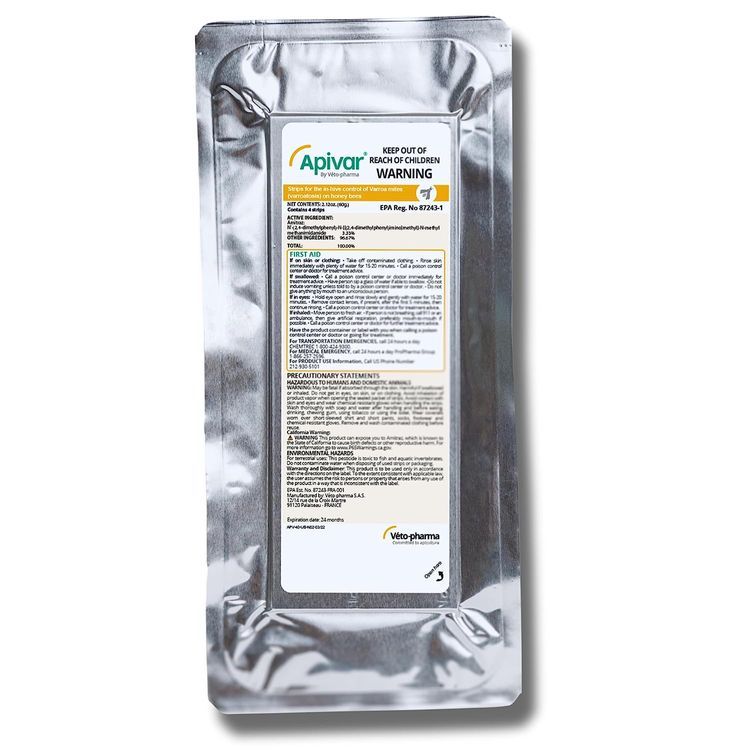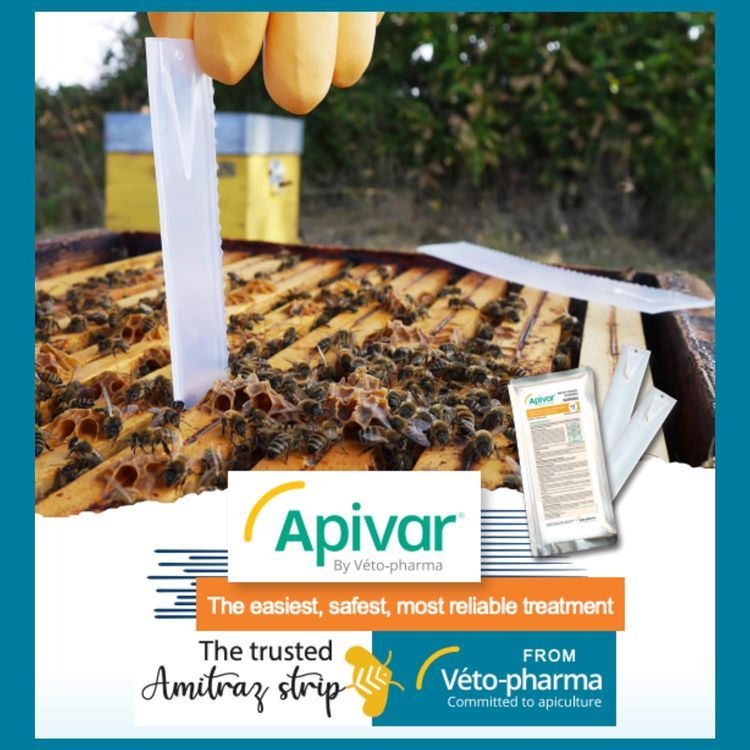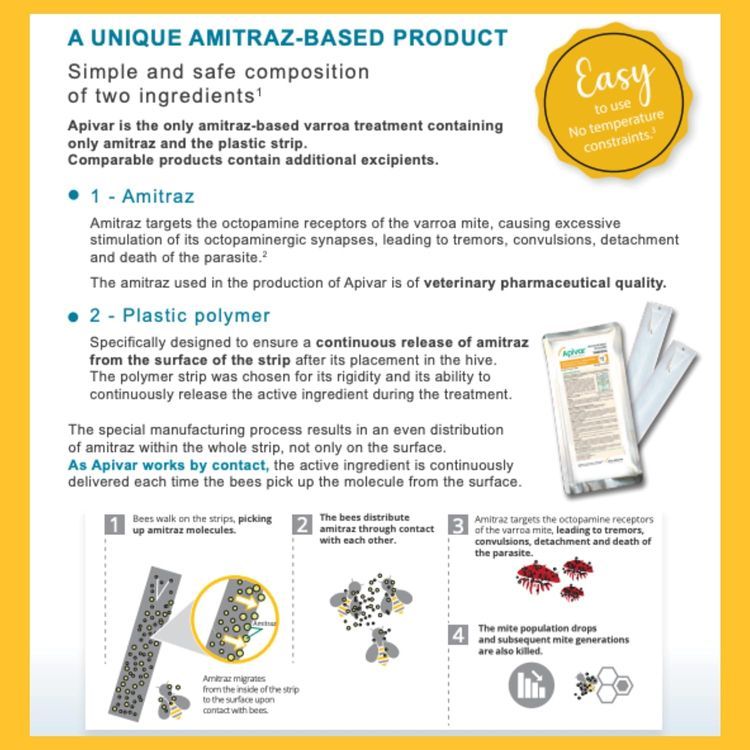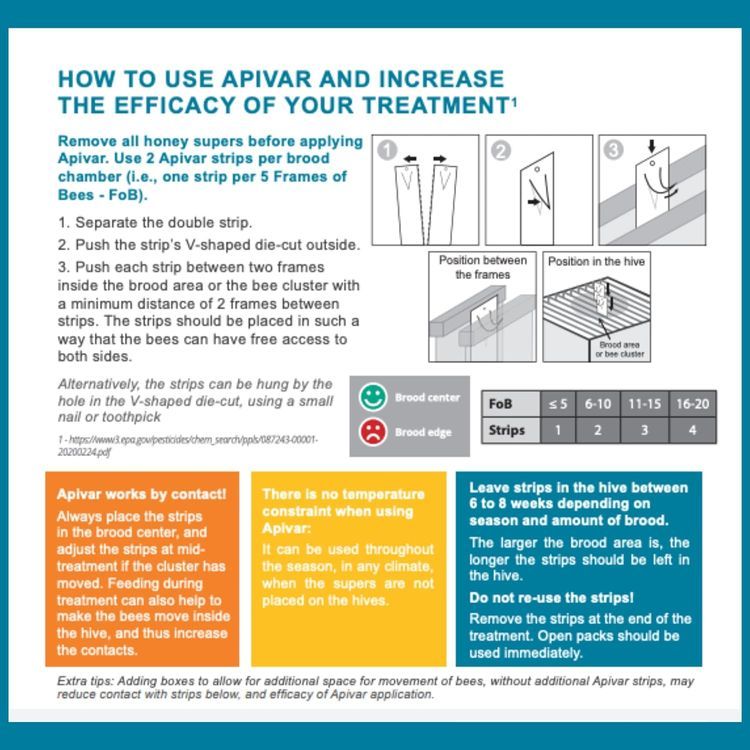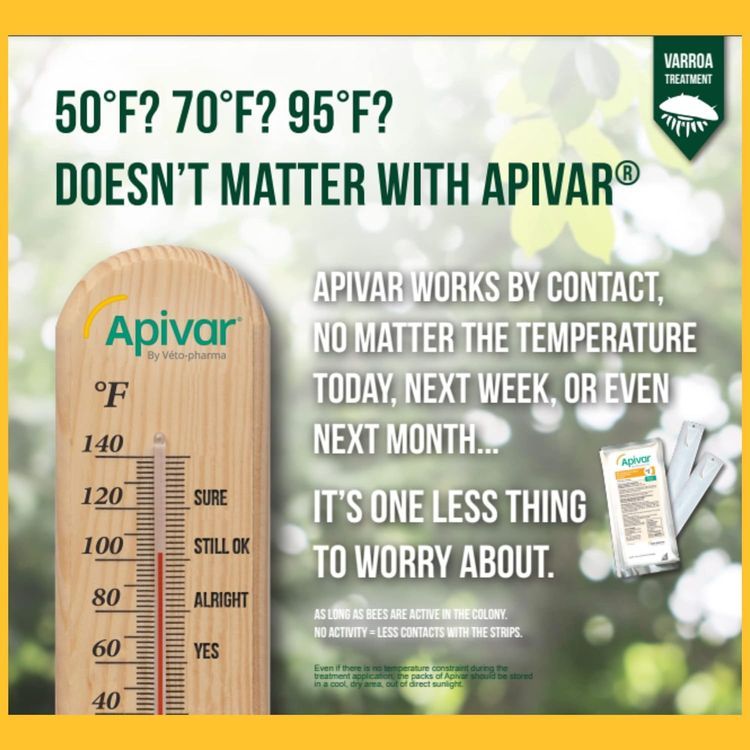Apivar Mite Treatment for Honey Bees
Welcome to our review of the Apivar Mite Treatment! In this article, we'll discuss the pros, cons, and key insights of this popular varroa control method. If you're looking for the best beekeeping supplies, check out our list of Best Beekeeping Supplies.
Check out the complete list: undefined.
* We research & recommend the best products based on our data analysis. If you purchase through our links, we may earn a commission. Learn more.
Apivar Mite Treatment
A convenient and effective mite control method for honey bees, but has concerns about resistance and chemical residues.
The Apivar Mite Treatment is the most popular method for controlling varroa mites in honey bee colonies. It offers a convenient and effective solution for beekeepers, whether they have backyard hives or manage commercial operations. With its slow-release Amitraz technology, Apivar can remove between 96 and 98.6% of mites when used correctly. The treatment can be applied up to 2 times a year, regardless of the season or temperature, making it suitable for year-round use. Simply hang the plastic strips between frames in the brood chamber, with an average of 2 strips per hive for a 6-8 week treatment duration. The strips continuously release amitraz, eliminating multiple generations of varroa mites. Beekeepers find Apivar very easy to use and appreciate its effectiveness in controlling mite infestations. However, there are concerns about the potential development of mite resistance to Amitraz over time. Some beekeepers have also raised concerns about the chemical residues left behind in the hive after using Apivar. While the product is generally considered safe for bees, it is crucial to follow proper guidelines and timing to minimize residues. It is worth noting that Apivar treatments are relatively cost-effective compared to alternative varroa mite management methods. However, the treatment has a finite duration of 6-8 weeks, and additional treatments or alternative methods may be necessary to ensure long-term mite control. It is also important to mention that Apivar is not suitable for beekeepers following organic or chemical-free beekeeping practices, as it involves the use of synthetic chemicals.
Our Analysis and Key Insights
In the following section, we will discuss some key insights and expert analysis of the Apivar Mite Treatment:
Effective Mite Treatment for Hot Weather
🔥 Apivar Mite Treatment has been proven to be an excellent mite treatment, particularly in hot weather conditions. It effectively controls varroa mites, helping to keep honey bee colonies healthy.
Easy to Use and Works Well
⭐ Beekeepers find the Apivar Mite Treatment very easy to use and have reported that it works well in their bee brood boxes. The convenience and effectiveness of this treatment make it a popular choice among beekeepers.
Convenient and Effective Mite Control
🌟 The Apivar Mite Treatment offers convenient mite control with its Easy Rip Strips. Beekeepers simply hang these strips between frames in the hive, and they gradually release the active ingredient, Amitraz, over several weeks. This ease of use is particularly valuable for beekeepers managing multiple hives. Additionally, the treatment has been proven effective in controlling varroa mites, which pose a significant threat to honey bee populations.
Concerns about Mite Resistance and Chemical Residues
⚠️ There are concerns among beekeepers regarding the potential development of mite resistance to Amitraz over time. Mite resistance can render the treatment ineffective, highlighting the need for careful monitoring and alternative management methods. Beekeepers have also raised concerns about the chemical residues left behind in the hive after using Apivar. While the product is generally considered safe when used according to instructions, it's important to follow proper guidelines and timing to minimize residues.
Economical Alternative for Varroa Mite Management
💲 The Apivar Mite Treatment is a relatively cost-effective option for managing varroa mites compared to some alternative methods. Beekeepers looking for an efficient and budget-friendly solution can consider this treatment for their colonies.
- Effective mite treatment, especially for hot weather
- Easy to use and works well in bee brood boxes
- Convenient and effective mite control with gradual release technology
- Economical alternative for varroa mite management
- Concerns about mite resistance to Amitraz
- Chemical residues in the hive
- Limited duration and not suitable for organic beekeeping
Frequently Asked Questions
How often can Apivar be used?
Apivar can be used up to 2 times a year at any time of the year the colony is active.
How many strips of Apivar should be used for a hive?
On average, 2 plastic strips should be hung for every 5 frames of bees in the brood chamber.
How long does the Apivar treatment last?
The Apivar treatment lasts for 6-8 weeks.
Can Apivar be used in organic beekeeping practices?
No, Apivar is not suitable for beekeepers following organic or chemical-free beekeeping practices.
Is Apivar safe for bees?
When used according to instructions, Apivar is generally considered safe for bees. However, it's important to follow proper guidelines and timing to minimize chemical residues.
Overall, the Apivar Mite Treatment offers a convenient and effective solution for controlling varroa mites in honey bee colonies. It is easy to use, works well in different weather conditions, and provides cost-effective mite management. However, there are concerns about mite resistance to Amitraz and the presence of chemical residues in the hive. Additionally, its limited duration and incompatibility with organic beekeeping practices should be taken into consideration.
